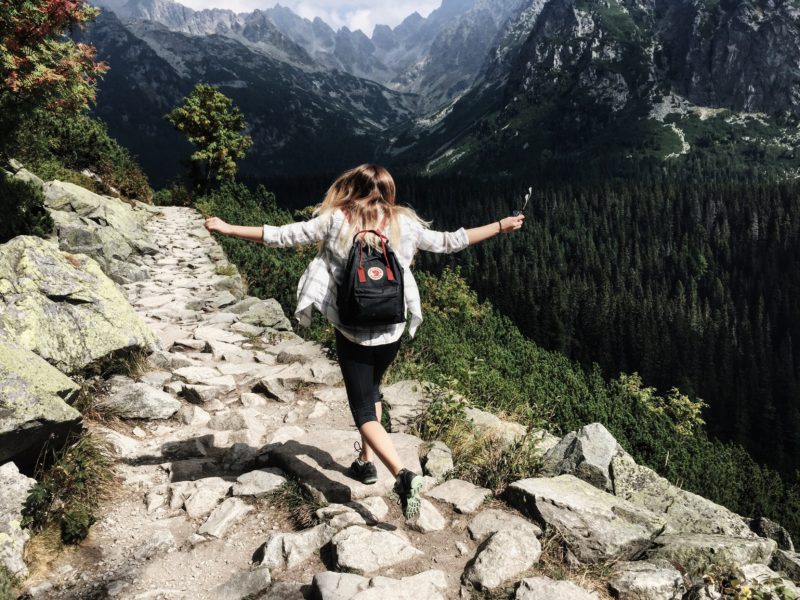Four Layer Dressing for Outdoor Business Retreats
Four Layer Dressing for Outdoor Business Retreats https://csuiteold.c-suitenetwork.com/advisors/wp-content/themes/csadvisore/images/empty/thumbnail.jpg 150 150 Sheila Anderson https://secure.gravatar.com/avatar/8bc0ec53e6f7ac5a4266ca38480eeb8c?s=96&d=mm&r=g
If you are like most people, packing for any business trip can be daunting. Now throw in packing for a business retreat where you will be enjoying the great outdoors along with business meetings, and you may find yourself staring like a deer in the headlights at your closet.
The dress code for most business retreats is business casual, and we all know business casual seems to be defined differently across business sectors, generations, and geographical locations. The important thing to remember is that you are still doing business even in a casual environment. That being said, there are some retreats where the outdoor activities truly call for casual attire, especially if you will be partaking in activities such as hiking, fishing, water sports, and hunting. You also may encounter extremes in temperature within the same day.
For those instances where casual attire is most appropriate, here are some tips for packing. The main rule is always DRESS IN LAYERS. This allows you the flexibility to remove and add clothing as needed for your environment.
Layer 1 | Base Layer
The base layer is next to your skin. The goal of this layer is to either keep moisture from your skin or keep heat in, consider function first. Do you need the clothing to keep moisture off your skin? If yes, then choose a moisture-wicking fabric and something light in weight, and you may want to keep the sleeve length short or sleeveless. If you will be in the sun, opt for a UPF-rated base layer for sun protection.
Do you need the base layer to keep you warm in cooler weather? If yes, a long-sleeve performance knit keeps body heat in. Performance knits range from lightweight to heavier weight. Choosing the right item depends on your environment.
Clothing ideas
- TOPS: T-shirt – short or long-sleeved, sleeveless top, shell top, or tank top.
- BOTTOMS: long base layer pants or shorts to wear under regular pants.
Layer 2 | Middle Layer
Typically, the goal of the middle layer is to provide insulation, especially in cooler climates. If the environment is warmer, then this may be the only outer layer you need.
Clothing ideas
- TOPS: cardigan, vest, sweater, pullover. In some instances, you could do a very casual blazer. Also, you can wear a long-sleeve button casual shirt (can be unbuttoned over a T-shirt). Avoid nice dress shirts.
- BOTTOMS:
- Jeans – Even though you may be hiking or getting intimate with the Earth, you still should avoid any jeans with holes in them.
- Canvas Pants – These are typically durable pants that can withstand rigorous activity.
- Zip-off Pants – These are great because you can simply zip off the bottom part to turn them into shorts.
Avoid wearing dresses, skirts (unless a sporty skirt made for outdoor activities), business suits, and nice dress pants.
Layer 3 | Outer Layer
The outer layer protects against the elements. As stated previously, there are times when the middle layer is sufficient.
Clothing ideas
In those instances where another layer is needed to add protection against wetness, wind, or cold weather, choose an appropriate item such as a trench coat, raincoat, winter coat, or rain pants.
Layer 4 | Accessories
The final accessories layer adds finishing details and completes your outfit. This layer includes hats, sunglasses, scarves, shawls, jewelry, belts, handbags, socks, and footwear.
For jewelry, it is best to keep it minimal, and you may want to leave your fine jewelry at home. Opt for a watch that is water resistant or an athletic type watch. Avoid any chunky necklaces or earrings.
Footwear can be a challenge. Be sure to avoid dress shoes, high heels, or any shoes with a slippery sole. You want shoes that are comfortable and can give you traction on a hike or other outdoor activities. Athletic shoes or hiking shoes work well, and there are a variety of other shoes made for the outdoors.
Fabrics and Brands
Selecting the right fabric for the day is also important. You want fabrics that move with you and are comfortable. Choose performance knits, cottons, merino wool, synthetics, nylon, down, mesh, moisture wicking, and linen.
There are a variety of outdoor clothing brands that provide many options. Some brands to check out are: True North, The North Face, Orvis, Kuhl, Duluth Trading Co., Columbia, Arc’teryx, Cabela’s, Patagonia, Polartec, REI, SmartWool, Cotopaxi, Eddie Bauer, Filson, Lole, and Marmot.
Following the four layers of dressing will ensure you are ready for whatever the day brings.
I help executives create a powerful image and brand so they look and feel confident wherever they are. Contact me at sheila@imagepowerplay.com to schedule a 20-minute call to discuss how we can work together to grow your visibility through my return on image® services. Visit Image Power Play to learn more.


